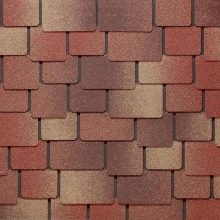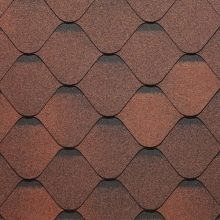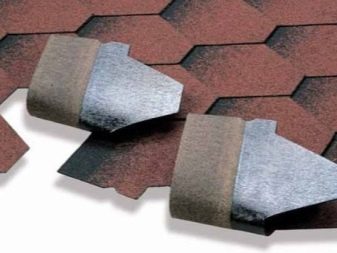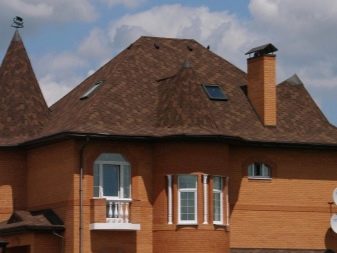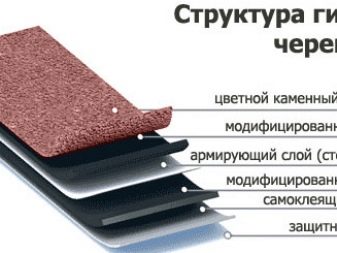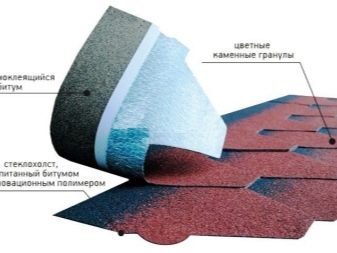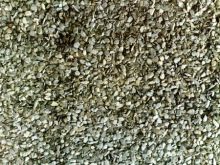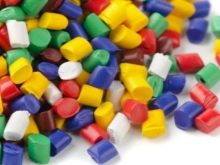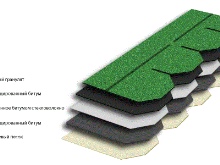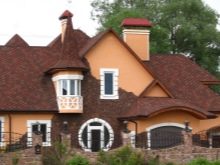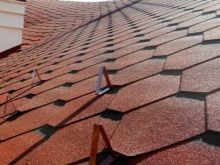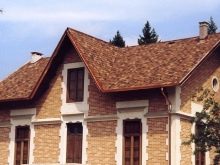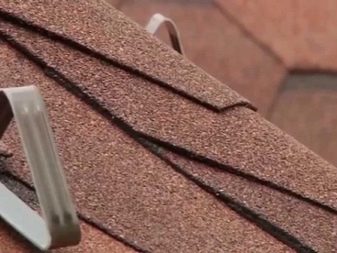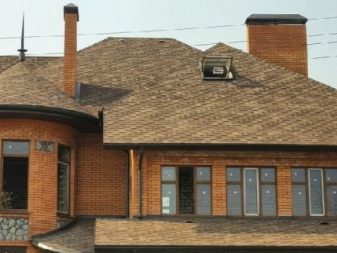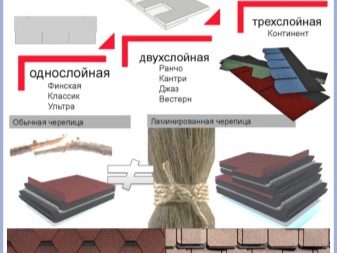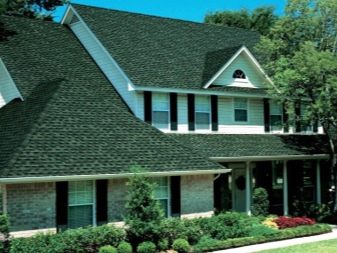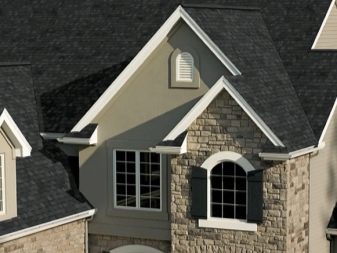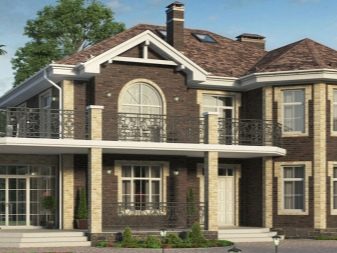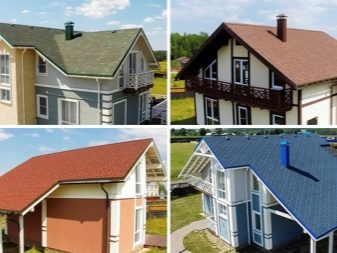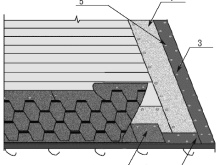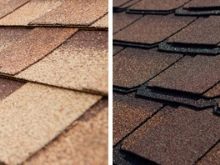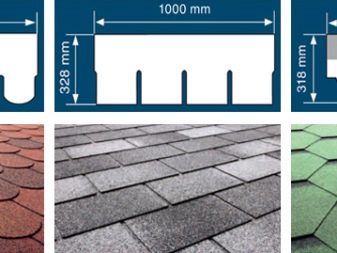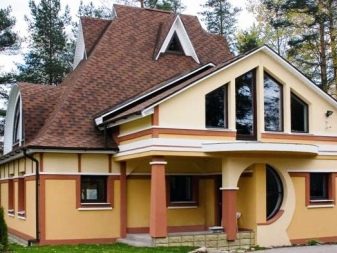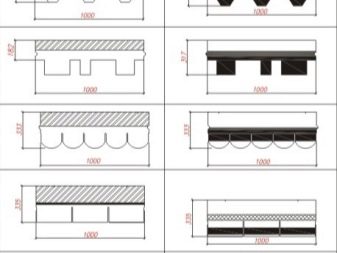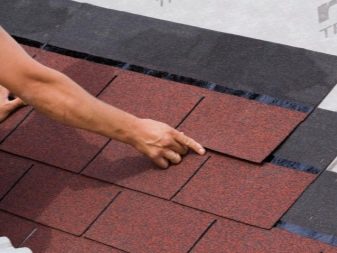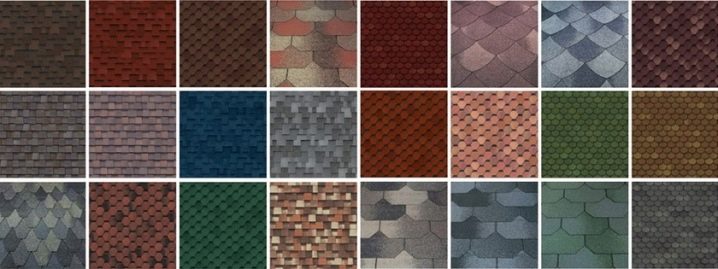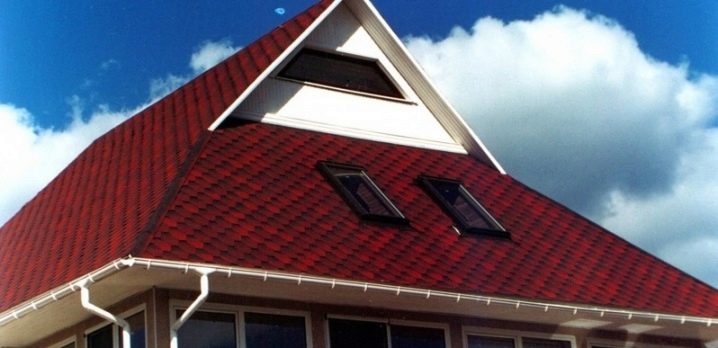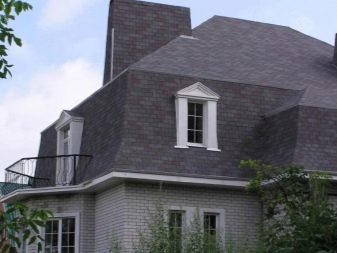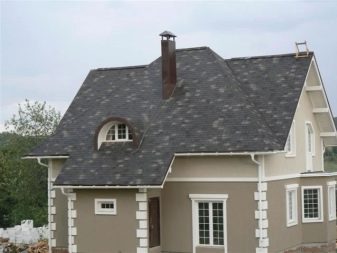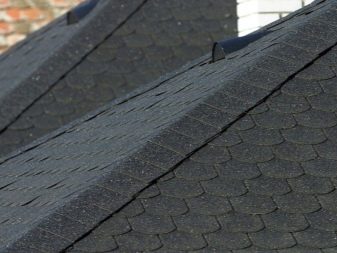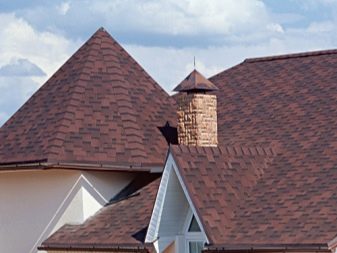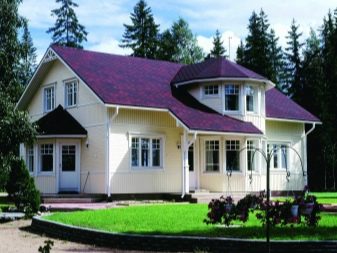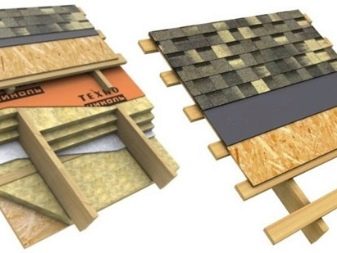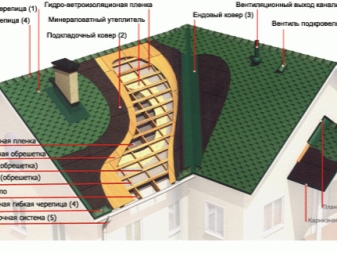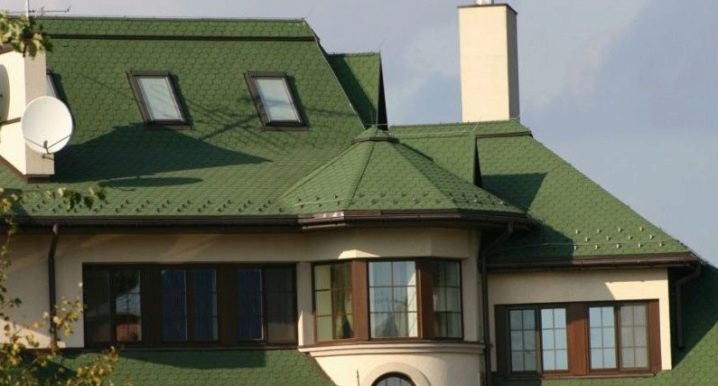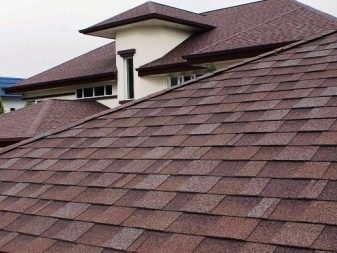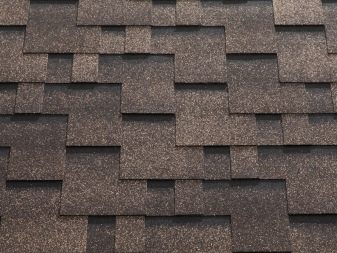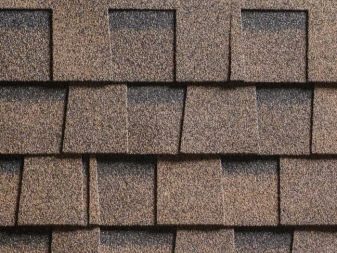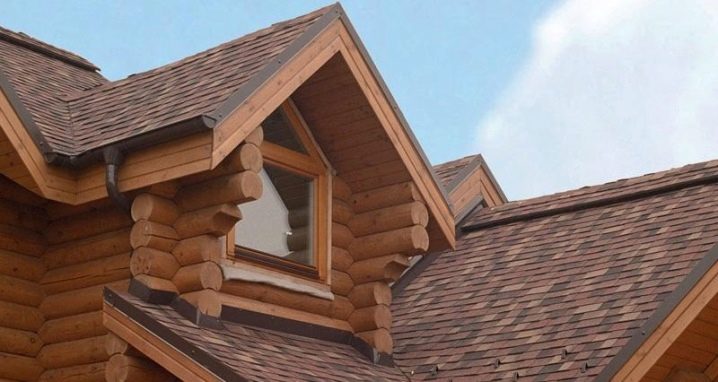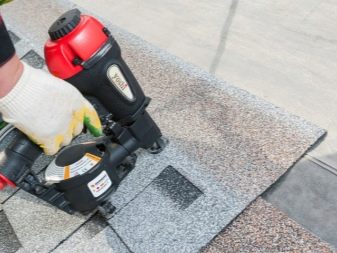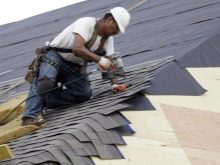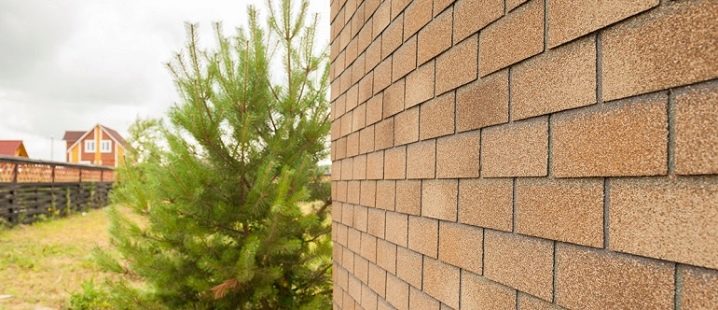Shingles: the pros and cons of the material

The roof of the building is often called the "fifth facade." This means that it, like the facade elements, needs protection and decoration. Modern manufacturers offer a lot of roofing materials. Tiling is one such coating. It meets the requirements of durability, reliability, durability. Not afraid of changes in temperature, frost, exposure to direct sunlight, is characterized by low moisture absorption and ease of installation.
Depending on the material used and production technology tile can be of several types. Attention deserves shingles on a bitumen base, for which she received the second name "bitumen."
Special features
The bituminous, or flexible tile appeared in the domestic market relatively recently. Another name is shingles. Its homeland is America, from where the material spread to Europe, and then - to Russia. The popularity of shingles due to its operational properties and a long period of operation. The bituminous tile combines features of soft rolled materials for a roof and properties of a tile.
The release form is elastic horizontal plates called shingles. They have a characteristic pattern, the average length is 1 m, and the width is 30-35 cm. Such a roof imitates ceramic tiles, chips, shingles, and slate coverings.
The material has many advantages, but all of them will be fully revealed only if the installation technologies are observed.
The plasticity of the material makes it easy to install it on complex and dome-shaped roofs with a minimum of waste. The important point is that its slope should be at least 11-12 degrees, that is, shingles on a flat roof do not apply. But on the roof with a negative angle of inclination relative to the horizon, such plates can be mounted.If you comply with the requirements for the angle of inclination of the roof, elastic tile can be used to design not only houses, but also office and industrial enterprises, as well as public buildings.
Appointment of the material gets when lining the roofs of sheds and extensions. It can be used not only at construction, but also restoration works.
Specifications
Soft roof is a multi-layer "cake", which includes the following materials:
- The decorative layer (also known as the top) is a basalt granulate or a mineral slate crumb. The purpose of this layer is to protect the coating, as well as to ensure its tint.
- A bituminous layer with polymer additives included in it, which provides flexibility and preservation of the shape of the material during deformations.
- The basis presented by the bitumen impregnated with felt or fiberglass. Responsible for the strength of the material.
- Another bitumen-polymer layer.
- The next layer of bitumen with polymers, on which the protective polyethylene film is glued.
- Transparent film of polyethylene, which is self-adhesive.
The basis of bitumen for the material is high-quality oil with modifiers andadditives. It has a long service life, fire safety.
As additives used:
- Atactic polypropylene (abbreviated - APP), which has the ability to withstand temperatures up to 120C. But the frost resistance of the material is low, which is why it is recommended for use in regions with hot climates.
- Thermoplastic (in the technical documentation referred to as styrene-butadiene-styrene, or SBS), it is also rubber. It is characterized by frost resistance and the ability to withstand temperature changes.
For installation in domestic climatic conditions used shingles with SBS bitumen. Moreover, the choice should be SBS-modified or oxygen-enriched version. The first is more elastic, and therefore expensive. The second is cheaper, but generally not inferior to SBS-modified.
In general, the structure of the tile is close to the construction of roll roofing materials. Then why not use the latter, instead of attaching similar, but smaller parts? However, laying tiles allows you to create one or another effect, to achieve a more attractive roof design.It is important that in the event of damage to a single element, it will be sufficient to replace only it, without having to dismantle the entire roll.
Soft tile has certain technical properties.
- Plasticity, flexibility, which allows the material not to deform in frost and easy to restore shape.
- The long period of operation is from 10 to 60 years, which is caused by the non-susceptibility of fiberglass and bitumen to corrosion. By the way, in practice, the service life may be higher, and some reputable European companies give a lifetime warranty on their products.
- Preservation of properties and attractive appearance at a temperature of -50 ... + 110C.
- Resistance to environmental factors: precipitation, squally wind, UV rays.
- High performance sound and heat insulation.
- The weight of a tile depends on its type and can vary between 5-20 kg / m kV.
- Water absorption - no more than 2% (according to GOST).
- Fire safety of the material due to the presence of stone granules in the upper layer of the material.
- Anti-avalanche, that is, the ability to tile to hold a large amount of snow that accumulates on the roof. Unlike metal tiles, flexible models do not need to install special traps.
- The possibility of using only on the roof, the slope of which has at least 12 degrees. This will also require the use of a junction of the junction, as well as the eaves and end. The junction bar protects rafters from moisture.
Kinds
Speaking about the types of soft tiles, first of all they mean its structural differences. Depending on the number of layers, there are several types.
- Single layer It is a shingle of standard sizes. Requires mandatory use of end and eaves slats. The eaves level protects the eaves element from moisture penetration.
- Double Layer The basis of the two-layer tile is a soft rectangle, the second layer repeats the features of a single-layer material.
- Three-layer. Such a shingle is similar to a two-layer one, but it has another layer of shingles, fixed with a slight offset.
- Multi-layered. Such a roof is warm, looks volume and attractive. Its type is the increasingly popular laminated tile, manufactured by combining several (at least two) layers with fiberglass. The resulting material has increased waterproofing performance, because the shingles do not bully during the wind.In addition, the material is characterized by simpler installation, since the roof strips do not need to be flattened and aligned with each other.
The more layers the tile has, the stronger and more durable it will be. Thus, the multi-layered version will last up to 50 years. At the same time, along with the number of layers, the load on the supporting structures of the building also increases. Here it is important to find the optimal ratio.
All multi-layered variants basically have a rectangular shingle (i.e., single-layer shingles) to which a certain number of shingle layers are attached with characteristic cuts.
Multi-layered options are easier to lay, because they do not require carefully customized design and the obligatory presence of a starting strip, without which installation of single-layer analogues is impossible.
To improve the technical properties of the material allows the use of zinc-titanium and copper. The first contributes to an increase in the service life of the tile, since it is immune to the action of corrosion. Copper tiles have a reflective ability, and therefore reduces the heating and softening of the coating in hot weather. In addition, this surface has an attractive luster, is sophisticated.
Depending on the place of attachment on the roof, there are three types of shingles.
- Private. Its purpose is to cover the main roof area.
- Eaves. This is a roll tape used for laying in the lower part of the roof slope. Only after that proceed to the attachment of the eaves.
- Ridge. Designed for mounting on the ridge element.
In addition, shingles are often used to design gables and even parts of the facade. In this regard, some manufacturers (for example, TechnoNicol) produced facade tiles. In general, it is similar to roofing, but has a more convenient installation for a vertical mounting method.
The shape of the edge of the tile plate can be one of the most common options or be unique. Among the popular forms are hexagonal (looks like honeycombs), irregular (it has different cuts), rectangular or diamond-shaped (like brickwork), “beaver tail” (rounded tiles), “dragon tooth” (tiles are trapezoidal), shingles, slate (layers are characterized by different lengths).
There are also designer varieties that imitate surfaces covered with reeds, slate, palm trees, resembling ancient medieval roofs.
If we talk about the types of material, depending on the characteristics of the upper layer, then it is:
- tile with mineral crumb;
- tile coated with basalt chips (higher quality, but expensive).
Dimensions
Unlike other types of roofing tiles, flexible has standard sizes, which is very convenient. Its length is 100 cm, width - 30 cm (in rare cases - 35 cm). One of its ends has a figured neckline. Material thickness - 3 mm. Depending on the type of tile changes its weight. So, single-layer tile has a weight equal to 5-8 kg per m2. Multi-layered tiles - on average, 25-30 kg / m2.
According to GOST, the mass of bitumen in the tile should be not less than 0.8 kg / m2 and not more than 1.8 kg / m2. As a rule, tiles of Canadian and American production fully meet these requirements.
Please note, here is exactly the weight of bitumen. But it also includes plasticizers and modifiers, which also have a certain mass. The weight of the tile consists of the weight of the bitumen, as well as the base of the material (fiberglass or polyester), the stone coating.
Colors
Despite the variety of color options, shingles can be made in one of 2 colors:
- monochrome (combines several shades within the same range);
- multichromic (tile includes different shades and their derivatives).
Finnish and American brands of tile, presented on the domestic market, mainly use monochrome staining. The leader in the field of stylish and diverse tile design is the brand "Tegola". Popular is the two-color novelty - a two-layer panel with a 3D effect. Thus, tiles for shingles are usually made. Monochrome tiles are cheaper than multichromic.
In general, shingles are characterized by a rich color range. The names of shades and textures may differ from manufacturer to manufacturer. The elements made in coffee colors are very popular. They give the building an exquisite respectability, look good on the roof of a country house.
Mediterranean notes in the exterior will make the installation of grayish-brown tiles with splashes of green and reddish color. Indigo tile looks expensive and unusual, as if enveloping a structure with a violet-purple haze. It is best to use it on low houses with a complex shape of the roof in the form of many triangles.
Lovers of rustic styles should look at the material in gray shades.imitating stone surfaces, as well as wood-colored coatings for shingles. The first will help move to the European "village", the second - to recreate the atmosphere of a traditional Russian house or alpine chalet.
For buildings in the classical style, it is recommended to purchase red-brown tiles, as well as grayish shades characteristic of the mountain range.
Advantages and disadvantages of the material
The pros and cons of soft tile due to the peculiarities of its production.
The material has the following obvious advantages:
- profitability (the amount of waste is not more than 5%);
- long period of operation (on average, the coating is 20-50 years);
- the ability to use in different climatic zones (the main thing is to choose the appropriate modification for a particular climatic region);
- dielectric capacity, that is, the roof, decorated with flexible tiles, does not attract thunder and lightning;
- savings on additional building insulation due to high thermal insulation indicators of tiles;
- silence in the house during wind and rain due to decent sound insulation material. This, by the way, is one of the secrets of its popularity with building owners with an attic;
- resistance to corrosion, biostability, resistance to chemical reagents;
- lack of “sail” characteristic of sheet materials for the roof, slate, ondulin, so the strong wind gusts are not terrible for shingles;
- reliability of fastening due to the use of nails and the presence of a self-adhesive layer on the tile;
- suitable for roofs of non-standard configurations;
- easy to assemble, because it has a compact size;
- allows you to implement a variety of design ideas, because it has many shapes and shades;
- lower cost compared to the price of ceramic tiles and some of its other types.
The disadvantage is the serious requirements for the working base. Since the material is flexible, the crate will not fit, a solid base is required. It can be mounted from OSB, plywood or board. The latter is used infrequently due to the high cost. Plywood, in turn, can not boast of high performance.In this regard, the most common option - the base of the OSB. On a solid base is attached a layer of waterproofing.
Mounting a solid crate increases the cost of laying shingles compared to a metal counterpart, while the service life of these options is almost the same.
In addition, shingles can not be used on roofs that have a slope of at least 12 degrees. When the slope of the roof at 12-18 degrees requires additional waterproofing at the junction points of the sheathing, the edges of the roof.
At close proximity with the structure of reservoirs, roof overgrowth with moss is possible. In addition, a rough surface attracts dirt, so shingles should be regularly cleaned. You can clean the soft roof with a broom, preferably in cool weather with soft soled shoes. It is unacceptable to walk on the roof in the hot season.
Manufacturers
In the domestic market, you can find a lot of options for shingles from different manufacturers. However, leaders who deserve positive feedback from owners and customer confidence are some brands.
Tegola
Italian brand, representative plants of which exist in many countries, including Russia.This allows you to produce material that meets European quality standards, but "free" its price from the cost of transportation from abroad. In other words, it is a high-quality tile at an affordable price. Default production is characterized by strength and durability and has about 100 varieties. There are models that have no analogues (for example, with a copper coating).
The flexible tile is optimum for operation in domestic climatic conditions as it withstands heavy rainfall, frosts and temperature drops. It has a wide price range - there are models of both economy and premium class.
Katepal
A distinctive feature of the products of this Finnish manufacturer is high frost resistance, which allows it to be used in any climatic conditions. The product line includes 5 collections, each of which has its own color palette.
Shinglas
Lithuanian production with the existing plant in Ryazan. The tile has the increased frost resistance, and also a guarantee of 30-50 years (depending on a collection).
American buyers enjoy the confidence of American products, it is used in 90% of US buildings. The most famous brands are Owens Corning, CertainTeed. They are considered the benchmark of quality and the founders of fashion trends in the field of roofing materials.
Domestic manufacturers, taking advantage of the decline in demand for foreign tiles in connection with the crisis, are increasing their power. Attention deserves the products of the company "TechnoNicol". For a very reasonable price, buyers can purchase high-quality bituminous tiles, which are uniquely adapted to Russian conditions of operation. Products are presented in a different price range: from economy to luxury materials.
How to choose?
When purchasing shingles, you should pay attention to the content of bitumen in it. In low-cost, lower-quality options, this indicator rarely exceeds 800 g / m2. It is better to choose material with bitumen indicators not less than 1200-1300 g / m2. Do not forget that the best tile for operation in the Russian conditions is based on SBS-modified bitumen.
When buying bitumen of unusual shades, as well as if the material is used in the sunny region, it is recommended to choose a model with basalt dressing. Such a protective coating provides the best protection for the color of the tile. If you want to save money, choose a monochrome tile of neutral shades with mineral dressing.
It is important that the dressing securely kept on the coating. The maximum allowable rate of crumb shedding is 1.5-2 g per sample.
The total cost of the material consists of the following indicators:
- thickness and quality of the bituminous layer;
- the density of the basis of fiberglass (the higher it is, the more reliable the tile will be);
- sprinkling material and its shedding indicator;
- a trade mark (most of the materials in their quality are not inferior to those of Finnish and American brands, but they are 2 times cheaper. If you need tiles of the original shape or shade, it is not always possible to find it in the collections of domestic manufacturers).
Thus, when buying, you should focus not only on the brand, but also on other parameters. When calculating the amount of material do not forget about the need to purchase lining carpet, waterproofing materials, components, curtain rods and wind strips. Domestic additional items for homes and consumables cost much less than European ones.
Subtleties of installation
When installing soft tile, remember the following rules:
- It is not suitable for installation on a flat roof. The roof should have a slope of at least 12 degrees.
- Tiling requires the installation of a solid base without gaps and protrusions.
- Installation can only be done in dry weather with a positive air temperature.
First of all, a cornice strip of metal is installed, which will protect against the penetration of melt water and rain.
The next step is laying the carpet-lining. If the roof is sufficiently flat, it creeps across its surface. With a large tilt enough to arrange the material only at the edges.
Installation of shingles start from the top, gradually going down. For fixing use galvanized nails with a large cap. The joints are additionally protected with mastic. Places exit chimneys require additional layers of thermal insulation.
After decorating the roof of the roof, you can tile the gables and even decorate the facade. By the way, the mounting of bitumen tiles on the walls of the house is one of the latest trends in the field of exterior design. This technology allows you to give the structure an original appearance, to hide minor defects (irregularities, cracks).It is well mounted on wooden and frame houses, buildings of foam and gas blocks. Use for a decor of fences, protections is possible. The tile imitating brickwork (from terracotta or baked brick) looks harmoniously.
Quite often, finishing with bitumen tiles is performed not on the entire surface of the facade, but to select individual elements (window and door openings, columns). As with the use of traditional facade materials, the use of tiles for cladding involves the purchase of additional elements (corner profiles, profiles for openings, tampers, etc.).
During operation, it is necessary to regularly check the tightness of the roof. At destruction of seams the moisture gets to the basis, impregnating it. To avoid this, timely repair and restoration of seam tightness will help.
Useful tips from professionals
In case of violation of the integrity of the roof or a separate element of the tile, moisture penetrates inside, which leads to dampening and destruction of the material. If it is negative temperature outside at this time, then the moisture turns into ice, which, being under the tile, leads to its tearing off from the surface of the roof.
Avoid this by following the following guidelines:
- On the basis of the roof must be mounted waterproofing layer.
- It is unacceptable to use damaged elements of the roof during installation, finding such during operation, they must be replaced immediately. Even a small crack begins to leak moisture, which leads to an increase in the area of damage, loss of its properties by the material.
- For the withdrawal of condensate, it is necessary to organize ventilation openings, the use of vapor barrier materials.
- To prevent deformations and damage to the roof can not move on it in hot weather, use aggressive cleaning methods.
- Regularly remove dirt from the roof, using a soft broom.
- In winter, with a plastic spade, snow should be removed, leaving a small (up to 10 cm thick) snow covering on the roof. It will perform a protective function.
- Regularly trim the branches of trees growing next to the structure to also prevent damage to the roof.
- Use special protective compounds that prevent the growth of moss and fungi on the surface of the roof. Spray them easier spray gun.In the fight against lichens, a copper grid or plate fixed at the top of the roof has worked well. When interacting with rain or melt water, copper is oxidized, and the resulting moisture acquires disinfectant properties.
For how to install shingles, see the following video.



